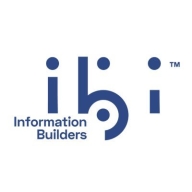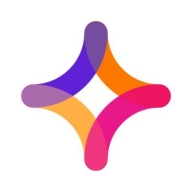

iWay Universal Adapter Framework and Jitterbit Harmony compete in the integration platform space. Jitterbit Harmony holds an edge due to its extensive features, offering advanced capabilities despite higher costs.
Features: iWay Universal Adapter Framework offers a variety of built-in adapters, ensuring seamless connectivity across diverse integration scenarios. Its strength lies in robust legacy support, catering to on-premises solutions. Jitterbit Harmony features advanced API management with cloud-based tools suitable for complex workflows. It provides enhanced flexibility with integration and API capabilities, supporting detailed customization.
Ease of Deployment and Customer Service: Both platforms provide efficient deployment models. Jitterbit Harmony simplifies this with cloud-based deployment, reducing implementation time. Its customer service is recognized for quick, effective responses. iWay Universal Adapter Framework's deployment benefits from strong legacy support, appealing to clients needing on-premises solutions. Its customer service reliably supports diverse client needs.
Pricing and ROI: iWay Universal Adapter Framework is regarded as cost-effective, offering competitive pricing with a solid return on investment through its extensive adapter library. Jitterbit Harmony, while more expensive, claims a strong ROI for organizations pursuing advanced integrations and enhanced functionality. The investment in Jitterbit Harmony is seen as valuable, especially for complex, scalable projects.

Jitterbit Harmony is a comprehensive platform for data integration and API management, enabling seamless synchronization and automation across cloud-based and on-premises applications.
Users leverage Jitterbit Harmony to integrate systems like ERP and CRM applications, simplifying complex data workflows and enhancing automation. It supports efficient data migration and ensures smooth connectivity, handling diverse integration needs and helping streamline business processes. Users emphasize its drag-and-drop functionality and extensive templates, which contribute to its robust performance. However, improvements are needed in data mapping, error message clarity, and documentation, especially when dealing with large data volumes.
What are the key features of Jitterbit Harmony?Companies across retail, manufacturing, healthcare, and finance sectors use Jitterbit Harmony to integrate critical applications and automate workflows. In retail, it connects inventory systems with sales platforms, reducing manual effort. Manufacturers sync their ERP systems with supply chain software, optimizing operations. Healthcare organizations integrate patient management systems with insurance databases, streamlining patient care. Financial institutions use it to connect accounting software with banking systems, ensuring real-time financial data exchange.
We monitor all Data Integration reviews to prevent fraudulent reviews and keep review quality high. We do not post reviews by company employees or direct competitors. We validate each review for authenticity via cross-reference with LinkedIn, and personal follow-up with the reviewer when necessary.